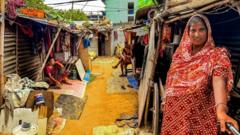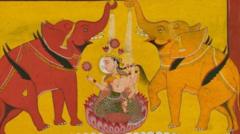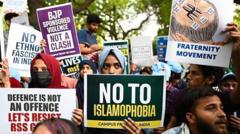In a monumental demonstration of faith and community, the Maha Kumbh Mela is underway in Prayagraj, India, drawing an anticipated crowd of around 400 million Hindu pilgrims. This grand assembly, recognized as the world's largest human gathering, will unfold over six weeks at the sacred confluence of the Ganges and Yamuna rivers. The festival, held every twelve years, is not only a spiritual pilgrimage but also a focal point of cultural and political significance in contemporary India.
Marking a defining moment for many, the Maha Kumbh Mela is rooted in ancient Hindu mythology, where a celestial battle between gods and demons over a pitcher containing the nectar of immortality gives rise to this sacred bathing ritual. Participants, clad in colorful traditional garb, engage in processions, singing, dancing, and performing rituals that reaffirm their cultural identity and spiritual beliefs.
This year's event features even higher stakes, as Prime Minister Narendra Modi's right-wing administration harnesses the occasion to bolster its political agenda amid a backdrop of rising Hindu nationalism. Consequently, government officials face the daunting task of ensuring the safety and wellbeing of attendees, implementing comprehensive measures to avert potential disasters and control health risks during the gathering.
At the heart of the Maha Kumbh Mela lies the belief that bathing in the sacred waters of these rivers can wash away sins and usher in spiritual renewal. Beyond mere numbers, this extraordinary event represents an enduring connection to heritage and the collective identity of Hindus from around the globe, as individuals and families travel from distant lands to partake in this powerful ritual at a site believed to also be the confluence of the mythical Saraswati river. The celebration not only emphasizes individual devotion but serves as a poignant reminder of the unity and strength found in shared faith.






















